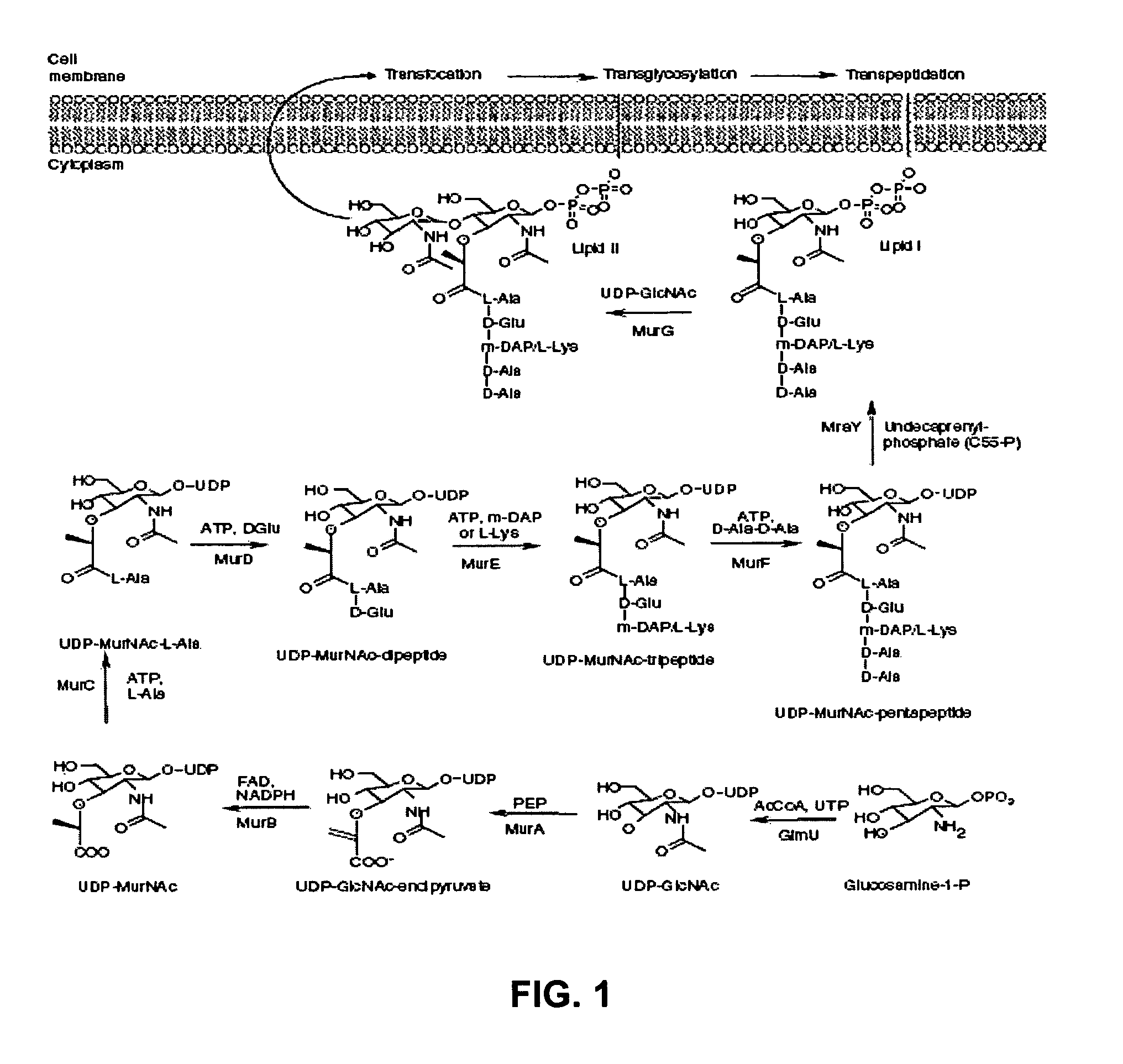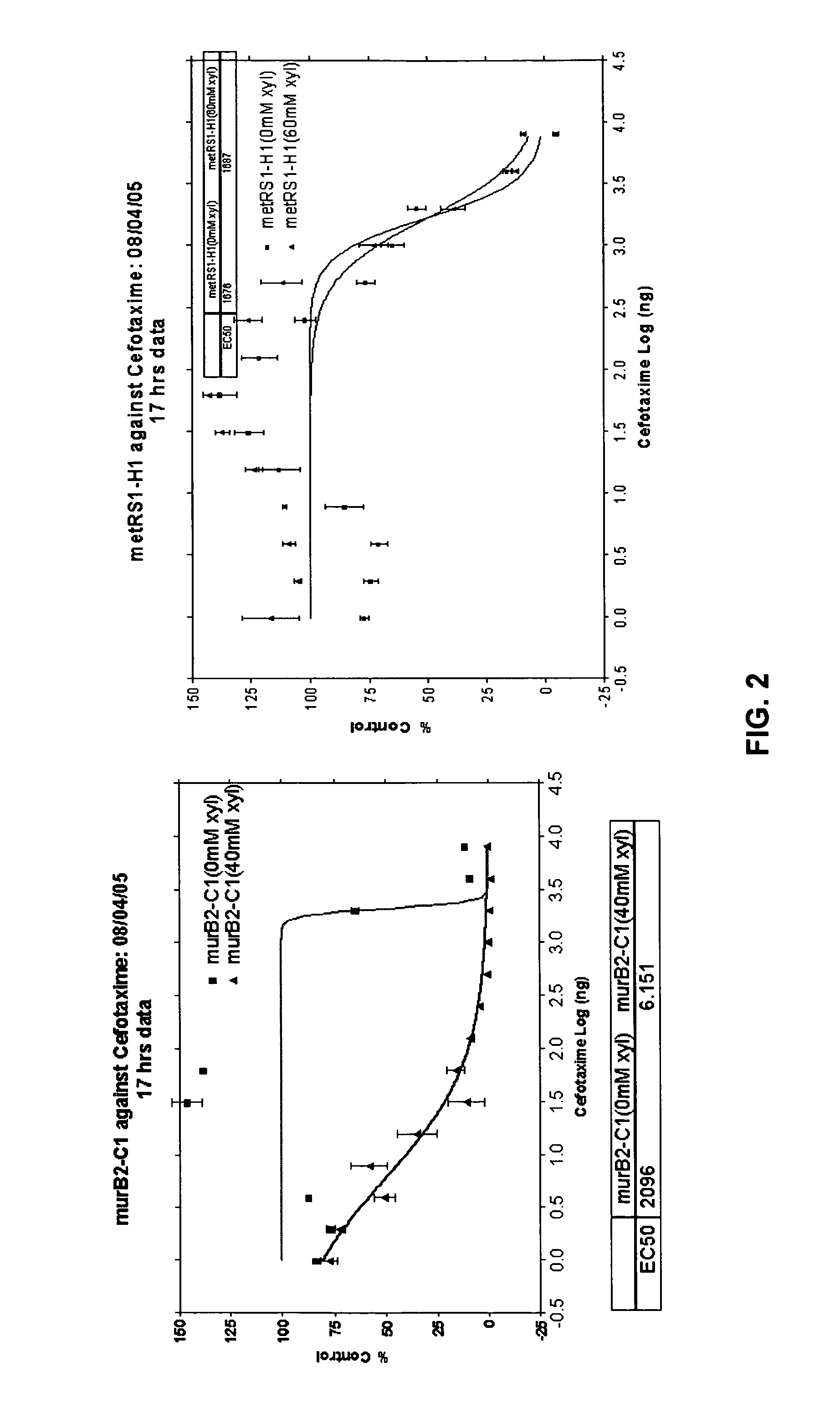Identification and application of antibiotic synergy
a technology of antibiotic synergy and identification and application, applied in the field of bacteria diseases, can solve the problems of limiting the effectiveness of any particular antibiotic, destroying the ability of pbps to interact with bacterial infections, and limiting the scope of single and combination drug treatment of bacterial infections
- Summary
- Abstract
- Description
- Claims
- Application Information
AI Technical Summary
Benefits of technology
Problems solved by technology
Method used
Image
Examples
examples
[0082]The following examples are meant to illustrate, and not to limit, the invention.
[0083]The following is an illustrative example for a method of the invention:
1) A gene or genes of interest (e.g., an operon) is PCR amplified using genomic DNA as a template. Care is taken to include about 200 bp on either end of the gene(s) to be surveyed.
[0084]2) That PCR fragment is fragmented by sonication; resulting fragments are blunt ended, size selected to be no bigger than about 350-400 bp, and then cloned into a polylinker immediately downstream of the inducible promoter in our expression plasmid, pBAX-2. Creation of this library is done typically in E. coli.
3) The DNA of the library is then transformed into the organism from which the gene of interest originated, e.g., Bacillus anthracis or Staphylococcus aureus. Individual colonies are collected by picking and cultured in 96 well culture dishes in growth medium that selects for presence of the plasmid.
4) After the cells have grown, th...
PUM
| Property | Measurement | Unit |
|---|---|---|
| β | aaaaa | aaaaa |
| fractional inhibitory concentration index | aaaaa | aaaaa |
| minimum inhibitory concentration | aaaaa | aaaaa |
Abstract
Description
Claims
Application Information
 Login to View More
Login to View More - R&D
- Intellectual Property
- Life Sciences
- Materials
- Tech Scout
- Unparalleled Data Quality
- Higher Quality Content
- 60% Fewer Hallucinations
Browse by: Latest US Patents, China's latest patents, Technical Efficacy Thesaurus, Application Domain, Technology Topic, Popular Technical Reports.
© 2025 PatSnap. All rights reserved.Legal|Privacy policy|Modern Slavery Act Transparency Statement|Sitemap|About US| Contact US: help@patsnap.com



